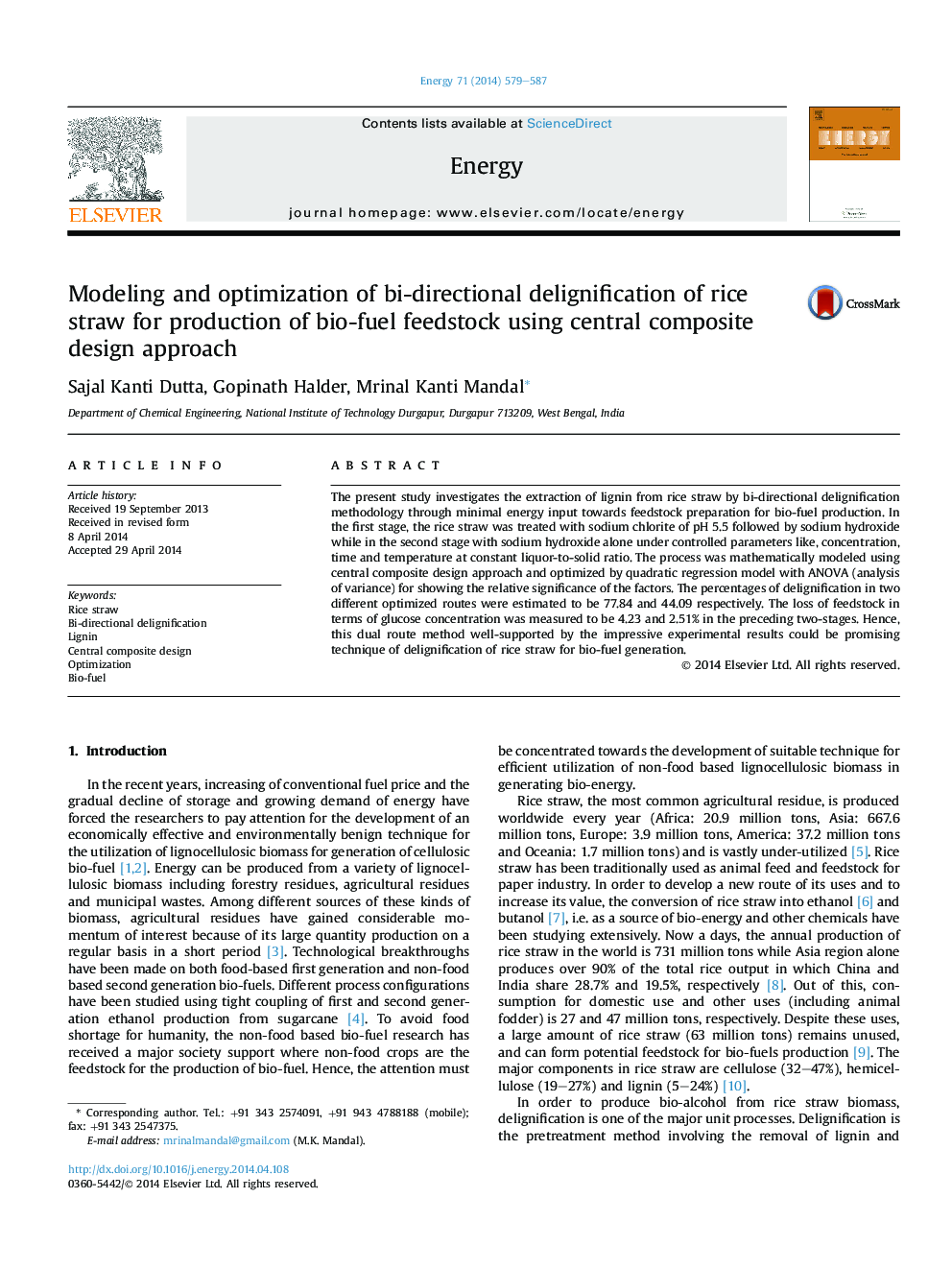| Article ID | Journal | Published Year | Pages | File Type |
|---|---|---|---|---|
| 1732417 | Energy | 2014 | 9 Pages |
•Dual route delignification through minimal energy input towards bio-fuel feedstock.•Comparison the effectiveness of delignification by alkali-sodium chlorite and alkali.•Central composite design approach was employed and optimized with ANOVA (analysis of variance) analysis.•Percentages of delignification: 77.84 for first stage and 44.09 for second stage.
The present study investigates the extraction of lignin from rice straw by bi-directional delignification methodology through minimal energy input towards feedstock preparation for bio-fuel production. In the first stage, the rice straw was treated with sodium chlorite of pH 5.5 followed by sodium hydroxide while in the second stage with sodium hydroxide alone under controlled parameters like, concentration, time and temperature at constant liquor-to-solid ratio. The process was mathematically modeled using central composite design approach and optimized by quadratic regression model with ANOVA (analysis of variance) for showing the relative significance of the factors. The percentages of delignification in two different optimized routes were estimated to be 77.84 and 44.09 respectively. The loss of feedstock in terms of glucose concentration was measured to be 4.23 and 2.51% in the preceding two-stages. Hence, this dual route method well-supported by the impressive experimental results could be promising technique of delignification of rice straw for bio-fuel generation.
